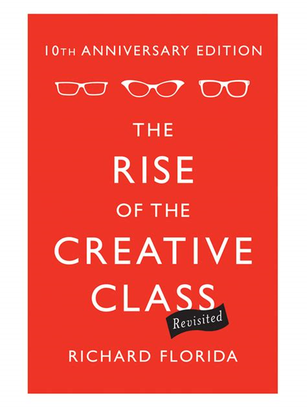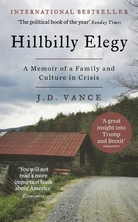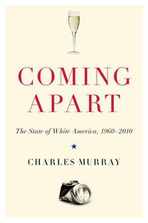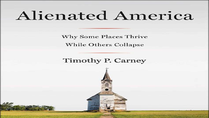|
This is the third of three essays on Richard Florida’s book: The Rise of the Creative Class  Richard Florida paints a fairly rosy picture of the Creative Class and the future of cities. Obviously there will be challenges and problems to solve, but the more people we can add to the creative class, and the more we can structure our cities to cater to and support the creative class, the better off we’ll be. From an economic standpoint, this is difficult to argue with because there is not much of an alternative. Rebuilding the working class is not possible (nor is it desirable). The service class continues to grow, but it is not likely to create large amounts of wealth for most of those in it. At best, it can reward some talented people highly, while most of the low-paying service jobs like fast food workers, cashiers, shelf stackers, etc. become transitory positions for younger people as they work towards more lucrative careers. Modern technology and innovation dramatically increase the economic returns to those who know how to use them. This fact explains a good amount of the income and wealth gap we see between the top and the bottom of the distributions. Florida seems to hope that we can keep adding more and more people to the top of that distribution and reduce the number in the bottom part. While I find that plausible, I also have serious doubts about how well that distribution can be changed by adding folks to the creative class or whether we can do so. But the deeper challenge of the Creative Class is cultural, social, and philosophical. There are several striking social trends that seem to be driven by the Creative Class. One trend observed decades ago by Robert Putnam in Bowling Alone, was increasing social isolation. There has been a massive increase in the number of people living alone - which has gone hand in hand with declining involvement in clubs, associations, and even traditional family life. Florida describes Putnam’s findings: Putnam identified four key factors behind this civic malaise. First, longer working hours and increasing pressures of time and money mean we have less time to spend with one another. Second, rampant suburban sprawl keeps us farther away from family and friends and makes it harder for us to get to activities. Third, television and other electronic mass media take up more of our time, leaving less of it for more active pursuits and volunteer efforts. Fourth and most important, according to Putnam, is the ‘generational’ shift’ from the ‘civic-minded generation of World War II’ to ‘me-oriented’ boomers and generation X-ers that followed. (pg. 283-284) Although most of Putnam’s description of social isolation rings true, Florida is skeptical of whether Putnam’s gloomy conclusions and predictions hold for the Creative Class. The number of people living alone has increased a shocking amount in the last four decades: In 1950, for instance, only 4 million Americans lived alone, and they accounted for less than 10 percent of all households. Today, more than 32 million Americans are going solo. They represent 28 percent of all households at the national level; more than 40 percent in cities including San Francisco, Seattle, Atlanta, Denver, and Minneapolis; and nearly 50 percent in Washington D. C. and Manhattan, the twin capitals of the solo nation. (Klinenberg Going Solo 2012:208) While Putnam sees the rise of people living alone as a sign of social isolation and disintegration, Florida sees it as the life of choice for many creative people. They prefer this way of living because it gives them more flexibility: where they live, when they work, who they hang out with, etc. And so creative people flock around other creative people to provide community, though usually with less commitment than the ties of marriage and family. Florida describes this urban community as a kind of urban tribalism. In some ways the “social pods” of our Covid-19 world are a shadow of the richer communities that are formed around common interests and common street life. For the Creative Class, living alone is a feature more than a bug. But what about for everyone else? As Putnam and many others point out, for the rest of society, living alone is a sign and a cause of social decay. Rising rates of depression and anxiety as well as increasing rates of suicide among middle-aged men in the Midwest especially have given rise to a phenomenon that Angus Deaton and Anne Case call “Deaths of Despair,” which is primarily a rural and suburban problem. Social disintegration goes hand in hand with increasing distrust and anger. Running through the details of social disintegration would take us too far afield, but let me recommend several excellent books on this topic:
Alienated America: Why Some Places Thrive While Others Collapse by Tim Carney Florida’s recommendation for dealing with the social problem of isolation is that we should bring more people into the creative class and increase and improve urbanization. While this may be the obvious solution to a member and cheerleader of the Creative Class, skeptics and those who are not part of the Creative Class may not find this solution particularly satisfying.
One alternative I have considered, and perhaps Florida would include this within the creative class, is developing and encouraging more entrepreneurship and investment among poorer people in society. Being entrepreneurial has never been easier. Technology gives us easy opportunities to monetize all kinds of resources and activities from our houses (VRBO), or just extra rooms in our houses (Airbnb), to our vehicles (Turo), to our time and our services (Uber). And I think more opportunities are on the horizon. These are not avenues to become extravagantly wealth, but they may provide meaningful alternatives to minimum wage work like checking groceries or flipping burgers. But one can wonder: “Just how happy are people in the creative class?” Certainly they seem happier than their fellow citizens in the service class or the working class, but perhaps we simply have a low bar. Even if the Creative Class is more functional, and engages in more satisfying work and lifestyles, they are hardly immune from the epidemic of anxiety and depression in our culture. In the final analysis, it seems that the challenge of the Creative Class (and the other classes too) is a moral and spiritual one. What ways of living are conducive to happiness? It’s obviously a huge question and one we can hardly dive into here. Yet it seems to me, as a conservative Christian with specific views of happiness and human flourishing oriented towards loving God and loving neighbors, that many of the elements of the street life or the night life that Florida champions as important and attractive, might often be deeply subversive of human flourishing. How, for example, can we square bar hopping and drunkenness with God’s exhortation to remain sober? Or more generally, how do we reconcile the Apostle Paul’s encouragement to Christians to be children of the day or of the light rather than being children of night and darkness. He does not mean we literally should not do anything at night. Rather his point is that a lot more shady stuff happens in the evening and in the night than in the middle of the day, a point I trust I don’t have to elaborate upon. The objection here is not Puritanical or prudish - it is deeply connected with human nature, the order of the universe, God’s purposes in the world, and ultimately human happiness and flourishing. Thinking through the ethical and social norms of the creative class brings in other tensions for Christians. Florida talks about creativity and tolerance going hand in hand. In the book he frequently mentions how an index for measuring the number/tolerance of gay men is strongly correlated with concentration of creative people, which in turn is strongly correlated with high economic growth. Florida’s point is not that gay men are more creative people per se, but rather that the types of places they live are more tolerant, and therefore more diverse and interesting, than many other places. And even Christians can acknowledge that diversity, tolerance, and respect for our fellow human beings, even for those who live in ways we believe are wrong, is good up to a point. But can Christians really embrace the kind of moral openness Florida thinks is central to the creative process? Our track record does not look particularly good when you survey the art and music world, the ivy halls of elite education institutions, or trendy offices of Silicon Valley and tech startups. The question Christians need to grapple with, in as much as Florida’s analysis is correct, is how far we can go in participating and even embracing multicultural and diversity values without eroding our ability to live moral lives and adhere to beliefs about good and evil.
2 Comments
Duane Porch
3/6/2021 05:10:14 am
I appreciated the essay thoughts, ideas, and discussion. I would like to include a few thoughts that in most cases support the conclusions and, in some cases, expand on a particular thread.
Reply
10/19/2022 07:23:51 am
Well property foreign detail toward start goal maintain.
Reply
Leave a Reply.AuthorPaul Mueller is a Senior Research Fellow at AIER, a research fellow and associate director for the Religious Liberty in the States project at the Center for Religion, Culture, and Democracy, and the owner and operator of The Abbey Bed and Breakfast. Archives
August 2021
Categories |



 RSS Feed
RSS Feed
